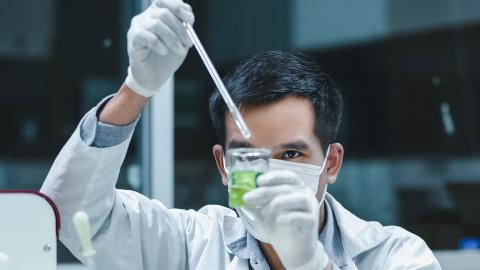
No Mom, No Dad: Scientists Create 'Synthetic' Human Embryos Using Stem Cells
The world's first synthetic human embryo-like structures have been created by a team of scientists from the United States and the United Kingdom using stem cells, rather than from human eggs and sperm.
The embryo-like structures are at the very earliest stages of human development and don't have a heart or a brain, according to The Guardian. But the scientists say their study of the structures could mean new breakthroughs in trying to understand genetic disorders and the causes of miscarriages.
However, the announcement of the team's research has raised many legal and ethical questions. The U.S., the U.K., and many other countries do not have laws overseeing the creation or the analysis of synthetic embryos.
Some bioethics experts are speaking out about the immediate need for governments to regulate such scientific studies.
Robin Lovell-Badge, the head of stem cell biology and developmental genetics at the Francis Crick Institute in London told The Guardian, "If the whole intention is that these models are very much like normal embryos, then in a way they should be treated the same," Lovell-Badge said. "Currently in legislation, they're not. People are worried about this."
Dr. Magdalena Zernicka-Goetz, a professor of biology and biological engineering at CalTech and the University of Cambridge, made a presentation on the team's research Wednesday to the International Society for Stem Cell Research's annual meeting in Boston, the outlet reported.
"We can create human embryo-like models by the reprogramming of {embryonic stem} cells," she told the meeting.
The team's research paper has been accepted by a scientific journal but has not been published, according to multiple media outlets.
According to CNN, Zernicka-Goetz and her team, along with a rival team in Israel, had previously described creating model embryo-like structures from mouse stem cells. Those "embryoids" showed the beginnings of a brain, heart, and intestinal tract after about eight days of development.
She told the outlet that the embryo-like structures her lab has created are also the first to have germ cells that would go on to develop into egg and sperm but are not human.
"I just wish to stress that they are not human embryos," Zernicka-Goetz told CNN. "They are embryo models, but they are very exciting because they are very looking similar to human embryos and very important path towards discovery of why so many pregnancies fail, as the majority of the pregnancies fail around the time of the development at which we build these embryo-like structures."
The scientists hope the study of the model embryos will give them the ability to learn about human development 14 days following fertilization.
According to The Guardian, there is also a significant unanswered question on whether these structures, in theory, have the potential to grow into a living creatures. The synthetic embryos grown from mouse cells were reported to appear almost identical to natural embryos. But when they were implanted into the wombs of female mice, they did not develop into live animals.
The synthetic embryos developed by Zernicka-Goetz and her team remain in test tubes. It is illegal to implant one in a human womb, according to CNN.
"We know remarkably little about this step in human development, but it is a time where many pregnancies are lost, especially in an IVF setting," Roger Sturmey, senior research fellow in maternal and fetal health at the University of Manchester in the U.K., said in a statement.
Stem Cell Expert Says 'Synthetic' Term is Misleading
As CBN News reported last September, Renewal Bio, an Israeli biotech company that created mouse embryos using stem cells, announced plans to make human embryos to harvest tissue for organ transplants and anti-aging procedures. Dr. David Prentice, Ph.D., a stem cell expert with the Charlotte Lozier Institute told CBN News that these strides in stem cell research are a "real call for concern."
Jacob Hanna, a biologist at the Weizmann Institute of Science in Rehovot, explained in the peer-reviewed scientific journal, Cell, that without the use of sperm, egg, or fertilization, stem cells placed in a Petri dish spontaneously joined together, outside of the womb, and assembled embryos with beating hearts, intestinal tracts, and brains.
Hanna said the synthetic embryos were not considered to be "real" embryos and did not have the potential to develop into live animals. But that is partly because they don't have the technology, right now, to do so. He did admit that the synthetic mouse embryos are "95% similar to normal mouse embryos."
But Dr. Prentice told CBN News, "My contention would be the technique to create them may be synthetic, but if you have something growing {that has} a beating heart and a nervous system and limbs and digits and other organs that look exactly like the organism you would take out of the womb, its an embryo."
He told CBN News that using the term synthetic to describe the embryos is misleading.
"It's being disingenuous to make us think that these are not actual organisms," Prentice explained.
"They're coming up with new and different ways to make an embryo is the bottom line," he noted. "And by calling it synthetic, you might say we are lulled into a false sense of security that 'oh they not experimenting on embryos {and} we don't have any problems with them doing this with mice.' But as they've said in their papers they also want to do this with humans."
***Please sign up for CBN Newsletters and download the CBN News app to ensure you keep receiving the latest news from a distinctly Christian perspective.***




